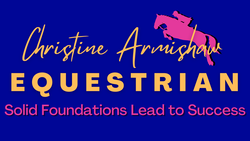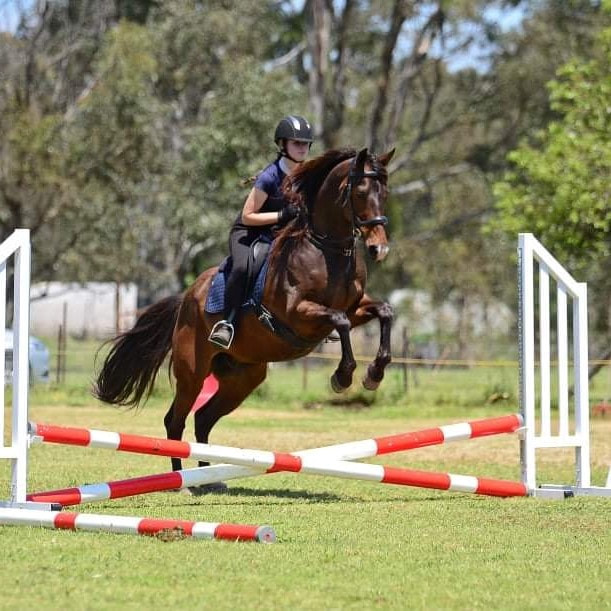|
Spring is upon us - yay! Bring on warmer and better weather for riding and having fun outside (where we will probably spend even MORE time in the paddock!)
But hold the phone, what's happen to your horse? He was going just beautifully 3 weeks ago, and now he seems to have turned into a mad man. Jumpy when tied at his regular spot, touchy when you brush him; more girthy than usual and super reactive to your leg aids when you ask him to go; jumping at bushes that have always been on your hacking route; messing up his canter leads, and even throwing in a few pig roots or bucks! If it's a behaviour that only recently just popped up, it could be due to the change in season. In both spring and autumn the weather throws out bouts of rain, mixed with warm sunny days. This makes the grass begin to grow fast and in 'flushes' and will likely be causing your horse to be experiencing the side effects of being 'grass affected'. "But horses are meant to eat grass", I hear you say. Well not the short sugary stuff, close to the ground. The ideal grass scenario for a horse is old pasture, which is long, stalky and more fibrous - where the grass has already used all of it's energy growing, and is not so full of sugar. To first counteract and combat the effects of grass, take you horse off the grass. Usually at this point there is all sorts of complaining and whining as to why this is not possible, but just decide if your horse's behaviour is dangerous - for you or your child (who will be riding?), not to mention the irritation your horse must be feeling! Two options are: 1. sectioning your paddock right down to a small area where multiple horses are still able to move around each other without getting in each other's way/likely to kick one another - you will know the dynamics of your herd and how they tend to interact. 2. fence a 'race track' type set up all the way around the outside of your paddock, wide enough so a horse could easily pass another horse if need be. This is the preferable set up, as your horses get to keep moving around all day, which is what they are designed to do. Then the inside, closed off area of grass can be fed out in small doses. The thing to bear in mind is that the grass is particularly 'potent' at its shortest length. This is because it is the most full of sugar now, while it is trying furiously to grow. So even if to you it doesn't look like much, for your horse, it is a sugary nightmare waiting to happen. Swap out the grass you have removed with hay. He still needs to eat. If your horse has no issues with being overweight, feed ad-lib hay, all day. If he doesn't need the weight, adjust the amount of hay according to his needs, but feed smaller amounts frequently. It is not good for a horse to go for long periods of time with no food in his gut, as he is designed to be constantly eating and constantly has stomach acid being produced; this is one of the causes of gut ulcers in horses. There are slow-feeder hay nets on the market, these are great. Next, you can help counter the effects of consumed grass with plain salt and magnesium oxide. If you'd still like to see more weight and condition on your horse, check out my post a basic but effective horse diet. If you're not needing your horse to gain weight, but are still wanting to reduce the negative effects of grass try this proven diet plan:
Quick tips:
I hope this helps you understand why your horse may have suddenly changed and gives you more tools in your belt to make him happier & healthier, and your rides and time together safer and more fun. Thanks for reading! PS. Let me know if there is any training, feeding or confidence question you have that I may be able to help with; other people are probably experiencing it with their horse too. Comments are closed.
|
AuthorChristine Armishaw: Archives
November 2020
Categories |
LocationContact |
|

 RSS Feed
RSS Feed
